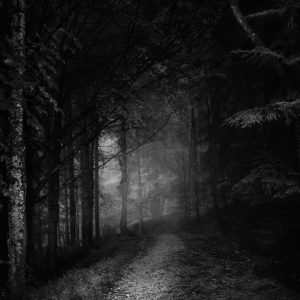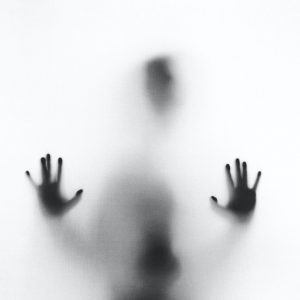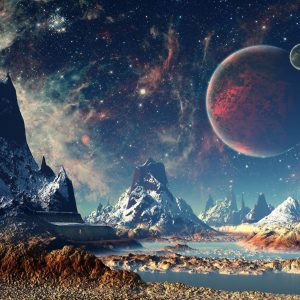Dear Admissions Committee,
I know I’m not your typical MDA candidate. You’ll see from my transcript that my undergraduate degree is in the mad sciences, and I only have the minimum required number of art and humanity credits. In my defense, I should say that the mad sciences were never a passion or even really a conscious choice. Science was the default. I’m the son of a mad doctor and a mad engineer; I was exposed to neither the dark arts nor the forbidden humanities at home. By the time I was accepted at the Moreau Institute of Things Man Was Not Meant to Know, it felt too late to choose another path.
My awakening to the arts came later, when I first attended the Black Ballet. I thought I’d known what to expect, thanks to Professor Zann’s music appreciation class (see his kind letter of recommendation, attached), but what I actually experienced transformed me.
My date, a dark cosmologist, was the type of sophisticate who could quote soliloquies from _The King in Yellow_ as easily as she could recite Jekyll’s formulae. She would later accuse me of infatuation with the principal dancer, but it was the _dance_ that captivated me. At times lithe, and at other times jerky and staccato, her movements transformed her into something both less and more than human. There was something predatory about the dance—but not so much bestial as insectile. Watching a tiger hunt, or a pack of wolves, you can relate to their hunger, their hope, the frustration of escaped prey, or the joy of triumph. The dancer seemed to be hunting, but it was cold, dispassionate, and alien.
Other dancers entered, only to be mutilated one after the other by the principal dancer’s sharp-nailed hands. Some of the dancers rose again and began to imitate, imperfectly, the principal dancer’s uncanny movements as if converted or infected by her touch. Others lay where they fell, their ribbons and leotards growing dark with what I would have sworn was real blood. They did not move until sometime after the curtains fell. If ever.
Sometime before the second act, I was transported. I was no longer watching an unforgettable performance on a forgettable first date. I was somewhere in the depths of prehistory, in a fetid sub-tropical swamp, watching an uncaring and immortal being of terrible power and alien cruelty. The horror and awe that filled me, watching this ballet and forgetting I was watching a ballet, far exceeded anything I had achieved or even witnessed in the mad sciences. I found myself holding two beliefs: I knew that this _thing_ I saw in the dance, this poisonous queen of arthropods, had existed long before the earliest hominids evolved—that, perhaps, she had always existed and always would—but I also knew, just as surely, that she had been invented less than a century ago by a composer and a choreographer, mere humans both. In that moment, when I believed with absolute certainty two mutually contradictory truths, I finally understood the power of the arts.
That ballet had infected me in a way no previous work of art ever had. And, certainly, in a way no scientific theory or invention ever could. While the mad sciences satisfy intellectual curiosity and serve as a more direct route to real power (both over nature itself and over the sniveling masses), the dark arts speak to something deeper—the subconscious. Or, if I may be permitted a moment of romanticism, the soul. It is the part of you that dreams, the part of you that knew what death was by the shadows cast by a closet door, long before you lost your first pet or saw a sparrow break its neck on a window pane. It’s the part of you that knows what beauty is and can see that beauty in the grotesque.
I set myself the task of becoming a dark artist. I tried drama, music, painting, and poetry, but the best I managed was a somewhat villainous villanelle. Passably evil, but not a single reader lost their grip on sanity or even lost sleep. I began to think that I just didn’t have the talent. Maybe true dark art, the kind that whispers madness to the unconscious and makes real the stuff of nightmares, is the sole province of genius.
And yet, I still couldn’t get the Black Ballet out of my mind. I thought maybe if I could not make dark art myself, I could at least be a devotee of the art of others. I wrote Black Ballet fan-fiction and built an unholy shrine to the principal dancer’s insect goddess in my dorm room. I sacrificed a stolen lab rat at just the hour moonlight streamed into my window and left it there to be overrun by flies. My roommate, understandably, didn’t appreciate that—he threw the carcass out and disinfected the whole area. The next full moon, I sacrificed him instead. That was, I admit, an overreaction. I almost lost my place at Moreau’s over the ensuing fracas; luckily, Dr. West had an urgent need for dead bodies for his experiments, so he pulled strings with administration to cover the whole thing up. Suffice it to say, I learned my lesson from this ordeal, and if I’m accepted into your esteemed university, my fellow students will have nothing to fear from me (although, I sincerely hope they’ll learn to fear my art).
Ultimately, fandom didn’t satisfy me. I could worship the (fictional) ancient insect goddess who still haunted my dream, but not the art that created her. How do you worship art if you can’t make art?
I returned, reluctantly, to mad science. My heart wasn’t in it, but I had come so far that, by doing the bare minimum, I could graduate with a GPA that wouldn’t completely embarrass my parents. When I succeeded in grafting a French bulldog’s head onto the body of a black-crested gibbon, thus successfully completing my senior project, I was proud but nowhere near as elated as I had expected to be. When my dog-ape went insane and terrorized a group of townies on a company picnic, killing two and injuring four, I knew it would mean high honors and admission to any mad-science doctoral program I wanted; far fewer mad science undergrads successfully create homicidal monsters than popular media would have you believe. But I couldn’t manage to feel excited about it. My friends threw me a party to celebrate my success, but I left early and wandered aimlessly around campus until sunrise.
The day after graduation, my parents left after breakfast, and I spent the morning packing my dorm room and worrying about my future. My only plan so far was to move back home and face the inevitable arguments and disappointment when my parents learned I hadn’t applied to any MD or Ph.D. programs and that I had no plans to. I rehearsed various approaches to explaining to them that I just couldn’t see myself as a mad scientist anymore. Even in my imagination, it was an argument I couldn’t win. Not against my relentlessly logical parents.
Once I loaded the last of my boxes into my car, I decided to cross the empty campus to a bar popular with my classmates. It would probably be as sad and abandoned as the rest of the college, but that suited my mood just fine. I never found out. I never made it past the poster advertising the Black Ballet. They were back in town. They had a performance that night. I called the number on the poster, but a machine informed me they were sold out. I drove there anyway; my only plan was to speak to a person. Maybe they’d let me stand in the back.
The froggish man in the box office would not let me stand in the back, but he would sell me a ticket to tomorrow night’s performance.
I went back to my car, but I couldn’t drive away. Not when I knew the principal dancer was, at that very moment, preparing to dance in the role of the ancient insect goddess of my dreams. The curtains would be rising right then, I knew. I closed my eyes and pictured it. I surprised myself by how well I could remember the dance. I remembered the droning tune of the overture, I remembered that it took several seconds for the hum of conversation to die down when the lights dimmed, I remembered my date still looking down at the program when the principal dancer came out. I remembered the first steps of her dance, that alien grace. In my mind’s eye, she looked right at me, which hadn’t happened when I was there the first time but still felt like a memory. I looked back into her cold, dark eyes. If she had been real and present, I would probably have had to look away to break the tension, but I did not.
Like magic, I knew then what I had to do. I waited for two hours and forty-eight minutes. Then, when people began to wander out of the theater into the street, I walked around through a brick-walled alley to the back of the theater. Somehow, I knew just where to go. There she was, next to a fire exit propped open by a folding chair, smoking a cigarette with two of her fellow dancers. I would later remember finding it strange for dancers, who are athletes, to smoke. At the time, I just thought how strange it was for this particular dancer, whose performance had upended my life, to exist, living and breathing off-stage, merely human.
She saw me right away and made a face I couldn’t decipher. “Leave us,” she said to the other dancers, who took their cigarettes just a few yards away. She had an accent I couldn’t quite place but suspected was from somewhere east of the Baltic.
“You,” she said accusingly, “you were thinking about me too hard. I was dancing, and you were thinking about me. It is distracting, you know. Very rude.”
She never explained to me how she’d felt my thoughts. She didn’t need to. It seemed the most natural thing in the world—of course, the energy that connects a great artist with their audience flows both ways.
I told her everything about how her art had changed me and my own failed attempts to become an artist. And she listened. She let me buy her an overpriced vodka on the rocks in a nearby hotel bar and listened some more. She made me promise that I would not fall in love with her. Then she told me her name was Maja and, grudgingly, that she would help.
The next day she got me a job on her crew. I was paid starvation wages to fetch and carry, to hammer together sets, to load and unload vans. I messaged my parents that I would not be moving home and ignored their calls. It was only after working for the Black Ballet for months that Maja taught me the first thing I needed to know.
“Art, art, art. It is all you say, that you want to make art. It is a good thing to make art, to want to make art. But it is not enough. You must have something you want to say with your art. Then, it will not matter good artist or bad artist. It will only matter does the art say what you want it to say.”
She had this thing she did when she wanted a pause to be especially dramatic; she’d pull deeply from her cigarette and hold it in her longs while she took a long slow drink—on this occasion, it had been a pilsner—and only after swallowing allow the cloud of smoke to escape out her nostrils.
“When you have something to say with your art,” she continued, “I will help you make it.”
What did I have to say? I looked back at my years of nightmares, my dead roommate, my rampaging science project, and at my burning desire to do for others what that first performance of the Black Ballet had done for me, and I finally asked myself why. Two weeks later, Maja and I began our joint project.
I have included, as my portfolio, a video of our installation, “Danse Inhumane.” The hybrid animals are my creation and design. It was Maja who taught them how to dance. I’ve been told that many who look into their almost human eyes have been plagued by bad dreams, and there are reports that several audience members have been driven to commit uncharacteristic acts of violence.
By the time my creations turned on Maja and escaped the gallery, I had already decided it was time for me to set off on my own. It is my sincere hope that your university will help me find new ways to say what I have to say.




